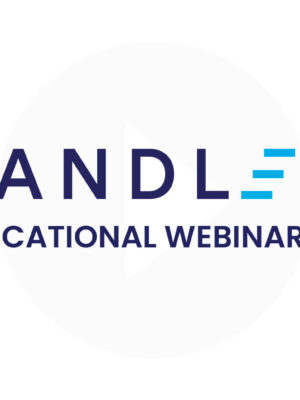Move Beyond Hope: In Major Account Sales, You Win or You Learn!

Hope, the saying goes, is not a strategy. Wise words! But are you perhaps relying on hope a bit too much after you and your team lose a major account?
Sales teams typically struggle with analyzing both major account wins and major account losses … but they are particularly likely to miss the opportunity to learn from a loss. They tend to favor “just moving on” as rapidly and hopefully as possible, having learned little or nothing, “Let’s just focus on the next win!” is the classic refrain. That is the sound of hope, rather than strategy.
Is that hopeful response simply human nature? Maybe. Another big reason effective win-loss analysis rarely happens, though, has nothing to do with the selling psyche. It’s the lack of practical Go/No-Go frameworks that dictate whether major deals should be pursued in the first place – and if they are pursued, how the team can mitigate the risks and maximize the likelihood of winning.
Consider this scenario. It’s midwinter. You have been lost for eight hours in deep, dark, freezing woods. It has become a very snowy night. The snow started out light about two hours ago, but now it’s a raging blizzard. Before, you were resolute. Now, you’re desperate. You can’t see a thing. The only thing you can think to do is just keep moving forward. You feel your way ahead, blindly grabbing at trees, hoping somehow to reconnect with civilization.
Finally, shivering and frostbitten, you stumble onto the shoulder of a road. Cars zoom past. You wave your arms, hoping someone will stop and help you. You know you are fortunate to be alive.
When the driver of the car that picks you up asks how you made it through a dense forest in the midst of a blizzard, in pitch darkness, you confess to having no clue how you did it. It was pure chance. You had no strategy going in. No compass. No map. You developed no strategy when you realized you got lost. You have no lessons learned. You do know, however, that with just a little less luck, there could have been a very different end to your story.
What about enterprise deals that selling teams pursue? What are their typical reasons for moving ahead? They, too, are “just moving forward” in the dark. When they start into the forest, without a map or a compass, it sounds like this: “It’s a big deal” or “It’s right in our power swing” or “They really want us to bid.”
These critical Go/No Go decisions simply can’t be dictated by emotion or hearsay. The stakes are too high. Logic and pragmatic decision-making must prevail. If we decide to take the journey, we must make sure we can navigate it properly. In Sandler Enterprise Selling, we follow a framework to carefully review a deal’s key issues before we decide to walk into the woods. We make sure it really makes sense to head into the forest, and we make sure we have a map and a compass once we start. The framework I am talking about shows us clearly whether we should proceed with this opportunity … or pass. We call it Pursuit Navigator, because navigation is exactly what it provides.
In Pursuit Navigator, issues are evaluated in three categories – client issues, selling team issues and financing/contract issues. In a team forum, accountable members of the selling organization assemble to provide input about every relevant issue within each of those three categories. For each open issue, you must determine whether your position is stable … or whether there’s risk. If a risk is identified, it must be quickly determined what mitigation actions, if any, can be taken.
Examples of open issues that present a risk include not having multi-level contacts, having doubts about an account’s financial stability, and proposing a solution that has never been delivered before. These are important items to know about. If they are present, you must strategize for them by executing real actions that mitigate the risks as quickly as possible.
So here’s the question. Why wouldn’t you utilize this type of analysis, given the heavy investment required in enterprise pursuits? A client recently told me, “Every opportunity we decide to go after costs us $40,000 – win or lose, $40,000.” And that’s just the direct financial investment. What about your people who are engaged in enterprise pursuits? There’s an opportunity cost when their everyday work is stopped or stalled. And how about your organization’s overall energy? How many significant deals can you credibly pursue at the same time? If you decide to cut corners to pursue multiple deals, capable, laser-focused competitors can be counted on to create formidable challenges.
Using a logical Go/No-Go process like Pursuit Navigator enables you to effectively spotlight and mitigate the risks. It makes your decision to proceed or pass an educated decision. If you choose to move ahead and submit a proposal, your chances of success will have greatly increased. Eventually, one of two things will happen. You’ll either win and move swiftly to get the contract signed and kick off the business relationship, or you’ll lose.
Even though you may have put in your very best efforts, in the enterprise world, losing happens. When it does, you may want to debrief with the account, but you must also be professional and respect the moment. They’re likely very busy with your winning competitor, ramping things up. In the immediate aftermath of a loss, your job is to conduct an internal analysis.
The format of an effective post-loss analysis is often a complete mystery to selling organizations. If you used the Pursuit Navigator, however, there’s no mystery. Your decision to move ahead was based on a logical Go/No-Go process. Your analysis, your post-mortem, now has a clear framework – the very process that dictated your decision to proceed. Your loss now provides real insights, because there’s a very good chance that you missed something. The question is, what did you miss?
Maybe you underestimated the severity of a certain risk. Or perhaps you judged that you were stable in an issue where you were not. Reviewing those same issues now, in the clarity of the post-mortem, sets the stage for you to turn your loss into an advance. Identifying previous mistakes ensures that your next opportunity’s Go/No-Go process will be that much more effective, thus increasing your probability of winning, thanks to the valuable lessons learned. Again: You win or you learn.
So make sure your analysis is a rigorous one. Conduct an effective Go/No-Go process first. While post-mortems can indeed provide you with deep certainty regarding the various causes of death, you’ll close more business if the danger signals are diagnosed and treated while you still have the chance to do something about them!
Learn more about Sandler Enterprise Selling, here.








